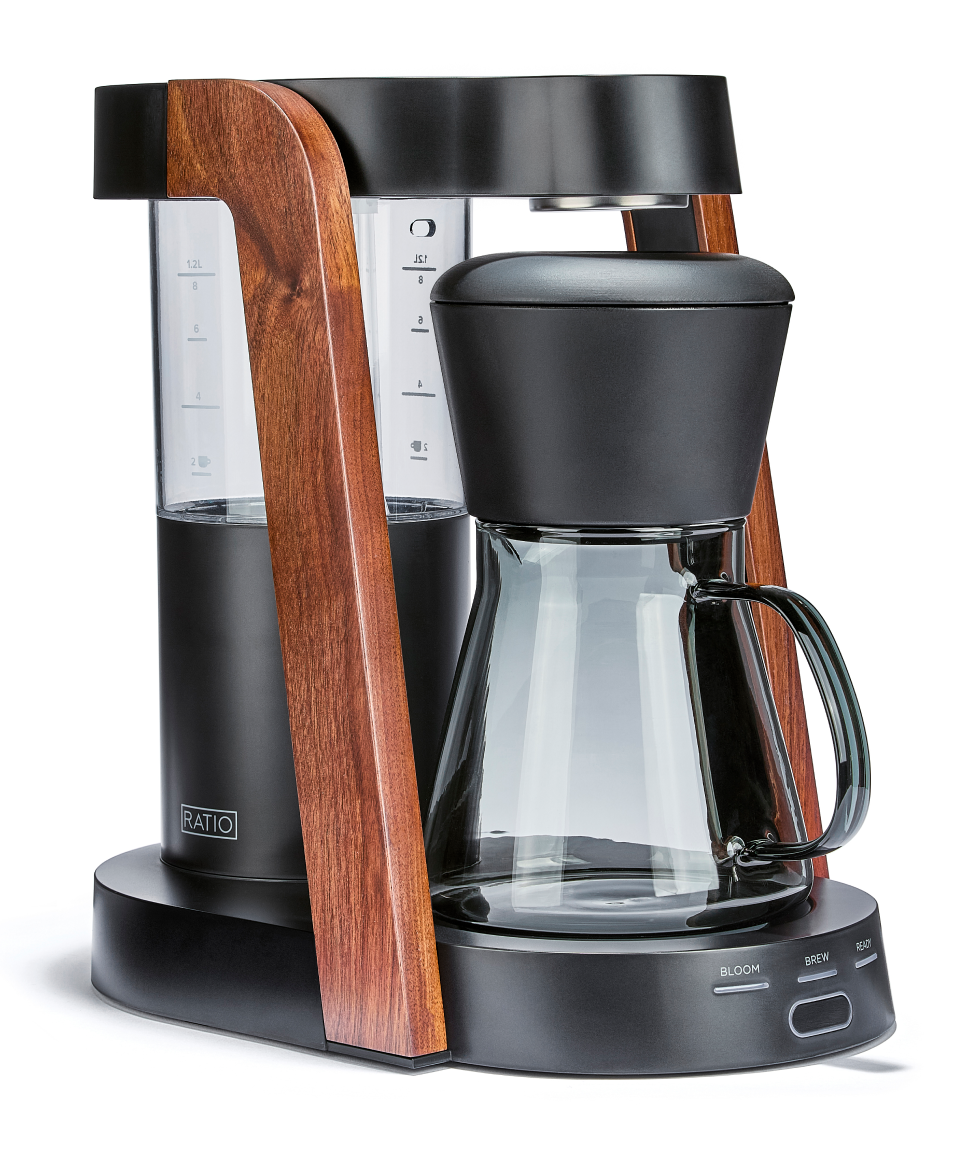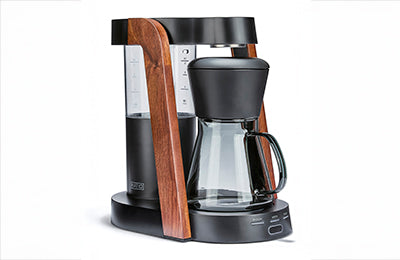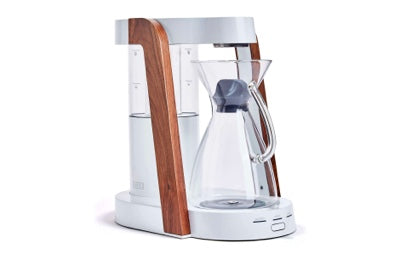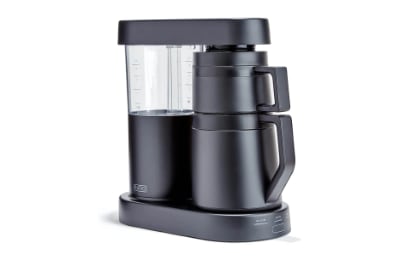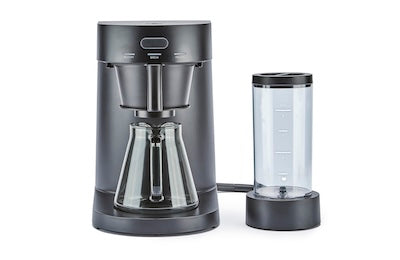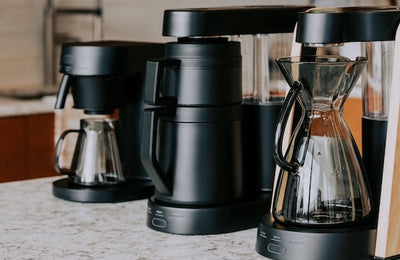The Problem With Eyeballing Your Coffee Measurements
Coffee brewing is part precision, part ritual. Some people lean into the art of it — adjusting by instinct, brewing with feeling. But when it comes to how much coffee and water you’re using, guesswork can cost you. Eyeballing your coffee measurements may feel casual and easy, but it’s one of the fastest ways to derail consistency, flavor, and quality.
If you’ve ever wondered why your cup tasted amazing one morning and flat the next — despite using the same beans and gear — there’s a good chance the culprit is measurement inconsistency.
Why Precision Matters More Than You Think
Coffee is surprisingly sensitive to small changes. A few grams too much or too little can shift the flavor profile from sweet and balanced to sour, bitter, or weak.
The brew ratio — the relationship between your ground coffee and the water you use — is the foundation of every great cup. While preferences vary, a common starting point is 1:16 (1 gram of coffee for every 16 grams of water).
Without measuring tools, you’re relying on assumptions: Is this scoop really one tablespoon? Is the water in my kettle exactly 500ml? Over time, those small guesses can lead to big differences.
The Hidden Cost of Inconsistency
Eyeballing might feel harmless, but it creates several problems over time:
-
Unpredictable Flavor: Some days are strong and bold, others thin and sour.
-
Wasted Coffee: Using too much ground coffee without realizing it burns through your bag faster.
-
Bad Habits: Inconsistent brewing makes it harder to diagnose issues or refine your technique.
-
Lost Potential: Great beans deserve great execution. You’re not getting the most from your coffee.
Consistency is what allows you to identify what you like — and replicate it. Without it, you’re basically starting over every morning.
Why Scoops Aren’t Enough
Many coffee lovers use a scoop as their standard — a heaping tablespoon here, a rounded scoop there. But volume is unreliable. The same scoop of coffee can weigh more or less depending on:
-
Grind size (fine vs. coarse)
-
Roast level (dark roasts are less dense)
-
Bean origin and shape
-
Humidity or freshness
Two scoops from the same bag can yield noticeably different weights. A scale removes the guesswork and gives you a foundation you can actually tweak.
Water Measurement Matters, Too
Just like coffee grounds, water volume impacts flavor. Adding 20ml too much or too little can throw off the brew ratio, leading to under-extraction (sour, sharp notes) or over-extraction (bitter, dry flavors).
Use a digital scale that measures in grams and track your water weight instead of relying on visual cues like "filling to this line" or "just under the spout."
What Accurate Brewing Actually Looks Like
Here’s a simple and consistent setup:
-
Digital Scale: Measures grams to track both coffee and water
-
Gooseneck Kettle: Allows controlled water flow
-
Timer: Helps you control brew time, especially for pour-over or French press
-
Standard Ratio: Start with 1:16 and adjust to taste (e.g., 20g coffee to 320g water)
These tools help eliminate the guesswork and allow you to make controlled adjustments.
How This Elevates Everyday Brewing
You don’t need to be a pro barista to benefit from accuracy. A reliable process:
-
Gives you consistent results every morning
-
Makes it easier to test different beans and methods
-
Helps you dial in preferences (stronger, lighter, more clarity, more body)
-
Builds brewing confidence
When your method stays the same, the only variable becomes the coffee itself — which is exactly what you want.
A Word About Coffee Makers with Built-In Precision
If you're someone who prefers a streamlined approach without juggling scales and ratios every morning, look for coffee makers that do the heavy lifting. Some high-end brewers, like those from Ratio Coffee, are engineered to mimic the precision of hand-poured brewing without manual measuring.
These machines are designed for those who want high-quality results with less hassle — maintaining consistent bloom cycles, water delivery, and saturation without needing to weigh or stir. For many, it's the perfect balance between craft and convenience.
Eyeballing Is for Seasoning, Not Brewing
Your morning coffee deserves more than a guess. While intuition has its place in the kitchen, great coffee is a result of intention. Eyeballing may feel fast or easy, but it often leads to frustration.
Investing in basic tools — or in a machine that does it for you — transforms your coffee routine from inconsistent to reliably excellent. And when every cup tastes as good as you intended, you’ll never want to go back to guessing.
Frequently Asked Questions
Can I use a scoop instead of a scale?
You can, but it won’t be as accurate. Weight is a better measurement than volume because it accounts for bean density and grind size.
What’s the best ratio of coffee to water?
A common starting point is 1:16 — one gram of coffee for every 16 grams (or ml) of water. Adjust based on taste.
Why does my coffee taste different every day?
Inconsistent measurements are a common reason. Even small changes in grind size, coffee weight, or water volume can affect flavor.
Do I need an expensive scale?
Not at all. Any digital kitchen scale that measures in grams with at least 0.1g precision will work well for coffee brewing.
Are there coffee makers that handle this automatically?
Yes. Some high-end brewers, like Ratio Coffee, are designed to automate precision by controlling water flow, timing, and saturation — delivering a consistent cup every time without manual measuring.
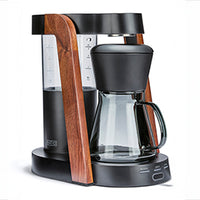 Ratio Eight S2
Ratio Eight S2
 Ratio Eight Original
Ratio Eight Original
 Ratio Six
Ratio Six
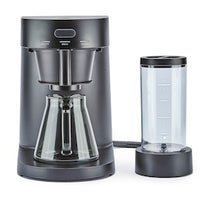 Ratio Four
Ratio Four
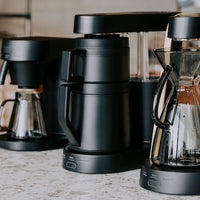 Compare Machines
Compare Machines
